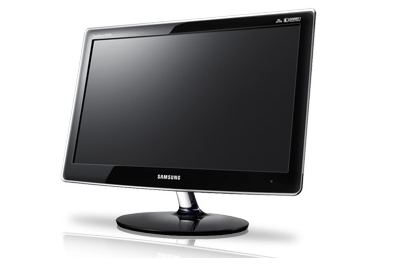Samsung SyncMaster P2370 review
This 23in Samsung monitor offers a high resolution and low power consumption at a price that's as attractive as the display itself. Are there any downsides to the P2370?

Gorgeous design and impressive image quality combine to make a mockery of that low price. We'd only consider it for home/office use however, rather than in a more corporate environment.
Normal colour provided the best tones and, after toying with Samsung's other options we decided we were done MagicColor just made things worse, while the much-touted 50,000:1 dynamic contrast ratio proved extremely irritating in use, swinging the backlight wildly up and down whenever the scene changed dramatically.
With the unnecessary gimmicks disabled, the SyncMaster P2370 offers good quality for such an affordable screen. We noted a very slight red tinge in our grey tests, but overall the tone was impressively neutral, colour gradients were perfectly smooth and our video tests were vibrant and full of detail. Our high definition clip of Wall-E was perfectly suited to the Samsung's 16:9, 1,920 x 1,080 resolution panel, and motion was crisp and smooth thanks to the 2ms response time.
The white level was blindingly bright despite the mere 250cd/m2 backlight, which helped to jazz up the colours, but this also highlights the P2370's weakness. That brightness comes at the expense of the black level, which lacked depth and came across as more of a very dark grey than true black. Some scenes looked a little pale and washed out, particularly darker scenes, a problem demonstrated by our gradient ramps: they showed only a thin sliver of black at the bottom end, while the top end was bright and full of white this monitor is much more suited to light, bright images than dark and gloomy scenes. We noticed the same in our test photos, with some shadowy areas looking much lighter than we're used to, so this probably isn't a monitor for accurate photo editing. It's only a small criticism though, and lowering the brightness can lessen the effect if you don't mind sacrificing a little of that brightness.
Other than that we couldn't find much to fault when testing the P2370. The design is simply stunning, although it is obviously far more suited to consumer environments than the dull confines of an office, and that works against Samsung. This is very much TFT focused on the home, with its HD resolution and living room design the lack of inputs and the wide bezel, along with the fixed stand, all work against that enticing price, so unfortunately, we can't really recommend this monitor as an office choice. However, if you're looking for a TFT for home, with perhaps the occasoinal burst of work related us, you won't find many better deals than the Samsung SyncMaster P2370.
Verdict
Gorgeous design and impressive image quality combine to make a mockery of that low price. We'd only consider it for home/office use however, rather than in a more corporate environment.
Screen size: 23in Resolution: 1,920 x 1,080 Response time: 2ms Brightness: 250cd/m2 Contrast: 1,000:1 (50,000 dynamic) Inputs: DVI Dimensions: 572 x 191 x 424mm
Get the ITPro daily newsletter
Sign up today and you will receive a free copy of our Future Focus 2025 report - the leading guidance on AI, cybersecurity and other IT challenges as per 700+ senior executives
-
 ‘Phishing kits are a force multiplier': Cheap cyber crime kits can be bought on the dark web for less than $25 – and experts warn it’s lowering the barrier of entry for amateur hackers
‘Phishing kits are a force multiplier': Cheap cyber crime kits can be bought on the dark web for less than $25 – and experts warn it’s lowering the barrier of entry for amateur hackersNews Research from NordVPN shows phishing kits are now widely available on the dark web and via messaging apps like Telegram, and are often selling for less than $25.
By Emma Woollacott Published
-
 Redis unveils new tools for developers working on AI applications
Redis unveils new tools for developers working on AI applicationsNews Redis has announced new tools aimed at making it easier for AI developers to build applications and optimize large language model (LLM) outputs.
By Ross Kelly Published
-
 Google layoffs continue with "hundreds" cut from Chrome, Android, and Pixel teams
Google layoffs continue with "hundreds" cut from Chrome, Android, and Pixel teamsNews The tech giant's efficiency drive enters a third year with devices teams the latest target
By Bobby Hellard Published